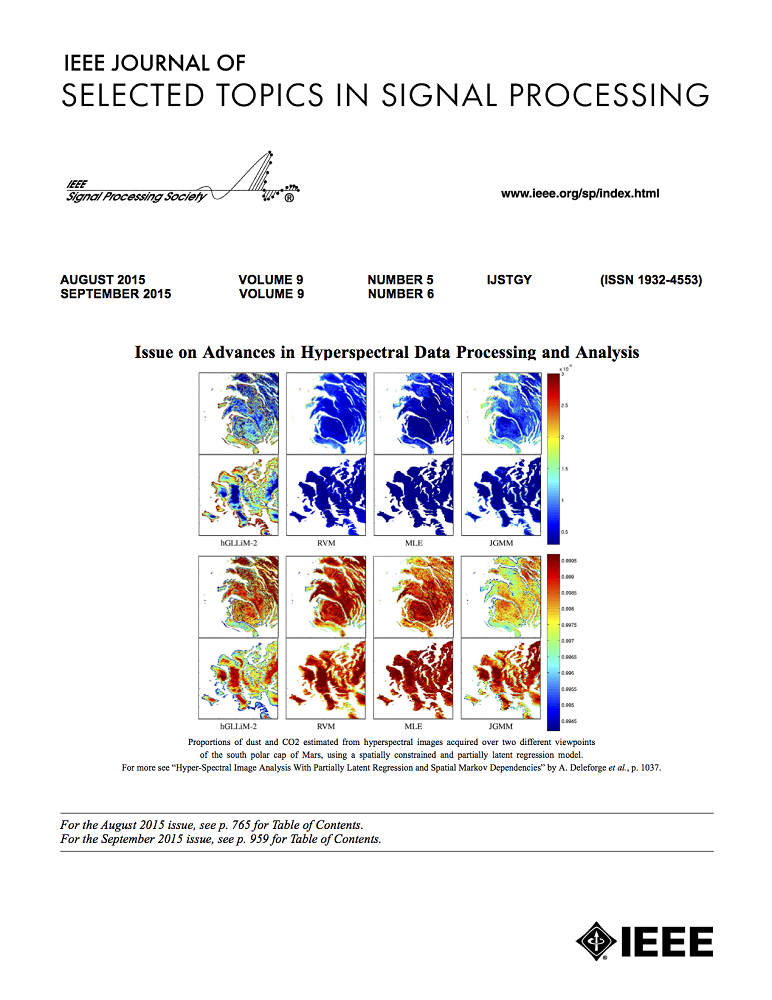基于灰度谱商星座矩阵和深度学习模型的可靠自动调制分类
IF 8.7
1区 工程技术
Q1 ENGINEERING, ELECTRICAL & ELECTRONIC
IEEE Journal of Selected Topics in Signal Processing
Pub Date : 2025-03-10
DOI:10.1109/JSTSP.2025.3547223
引用次数: 0
摘要
自动调制分类是为未来无线通信设计智能高效收发器的关键技术之一。然而,信道干扰会导致传统的信号表示不稳定,例如相位和正交(I/Q)序列以及星座,从而导致新信道环境中的泛化能力差和显著的分类性能下降。在这种情况下,重新训练分类器以获得鲁棒和有效的性能需要大量的重新收集样本,并且消耗大量的计算资源,这使得其成本高且难以在实践中应用。为了解决这个问题,我们提出了在正交频分复用(OFDM)系统中使用深度学习(DL)的基于灰度谱商星座矩阵(GSQCM)的AMC方法,该方法不需要重新训练分类器或对未见信道情况执行均衡。具体而言,我们首先提出了一种新的方法,即双向多步谱循环分割(BMSSCD),以一种长度扩展的方式产生信道鲁棒谱商信号。然后,我们将这些生成的信号转换为特定维度的gsqcm。最后,使用gsqcm作为输入,基于几个经典深度学习模型(如AlexNet、VGGNet、GoogLeNet和ResNet)训练我们的分类器。注意到所有基于dl的分类器都是在加性高斯白噪声(AWGN)信道下训练的,但都是在瑞利多径衰落信道下测试的。大量的仿真表明:(i)新的信号表示,即GSQCM,非常适合作为基于dl的AMC方法的网络输入来训练可靠的分类器,避免了在特定信道条件下收集的数据集上的模型过拟合;(ii)所提出的GSQCM- dl方法具有很强的泛化性,在考虑不可见的传播场景时,与一些现有方法相比,具有鲁棒性和优越的性能。本文章由计算机程序翻译,如有差异,请以英文原文为准。
Reliable Automatic Modulation Classification via Grayscale Spectral Quotient Constellation Matrix and Deep Learning Models
Automatic modulation classification (AMC) is one of the crucial technologies for designing an intelligent and efficient transceiver for future wireless communications. However, the channel interferences can cause instability in traditional signal representations, such as inphase and quadrature (I/Q) sequence, and constellations, leading to poor generalization and significant classification performance degradation in new channel environments. Retraining the classifier to achieve robust and effective performance in such cases requires a large number of re-collected samples and consumes vast computational resources, which makes it costly and difficult to apply in practice. To solve this problem, we propose the grayscale spectral quotient constellation matrix (GSQCM)-based AMC methods using deep learning (DL) in orthogonal frequency division multiplexing (OFDM) systems, which do not require retraining the classifier or performing equalization even for the unseen channel cases. Specifically, we first propose a novel method, named bidirectional and multi-step spectral cyclic division (BMSSCD), to generate the channel-robust spectral quotient signals in a length-extension manner. Then, we convert these generated signals into dimension-specific GSQCMs. Finally, the GSQCMs are used as the input to train our classifiers based on several classical DL models, such as AlexNet, VGGNet, GoogLeNet, and ResNet. It is noted that all of the DL-based classifiers are trained under additive white Gaussian noise (AWGN) channel but tested under Rician and Rayleigh multipath fading channels. Extensive simulations show that (i) the novel signal representation, i.e., GSQCM, is well suited as network input for the DL-based AMC methods to train the reliable classifiers, avoiding the model overfitting on the dataset collected under a specific channel condition, (ii) the proposed GSQCM-DL methods exhibit strong generalization, achieving robust and superior performance in comparison to some existing methods when the unseen propagation scenarios are considered.
求助全文
通过发布文献求助,成功后即可免费获取论文全文。
去求助
来源期刊

IEEE Journal of Selected Topics in Signal Processing
工程技术-工程:电子与电气
CiteScore
19.00
自引率
1.30%
发文量
135
审稿时长
3 months
期刊介绍:
The IEEE Journal of Selected Topics in Signal Processing (JSTSP) focuses on the Field of Interest of the IEEE Signal Processing Society, which encompasses the theory and application of various signal processing techniques. These techniques include filtering, coding, transmitting, estimating, detecting, analyzing, recognizing, synthesizing, recording, and reproducing signals using digital or analog devices. The term "signal" covers a wide range of data types, including audio, video, speech, image, communication, geophysical, sonar, radar, medical, musical, and others.
The journal format allows for in-depth exploration of signal processing topics, enabling the Society to cover both established and emerging areas. This includes interdisciplinary fields such as biomedical engineering and language processing, as well as areas not traditionally associated with engineering.
 求助内容:
求助内容: 应助结果提醒方式:
应助结果提醒方式:


